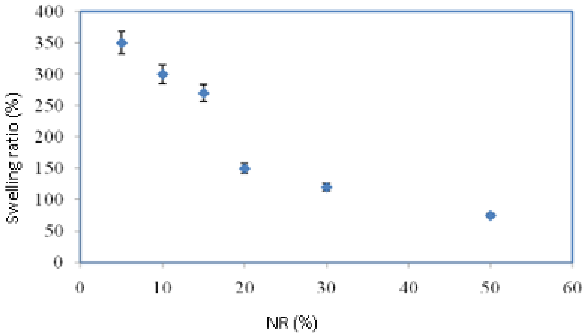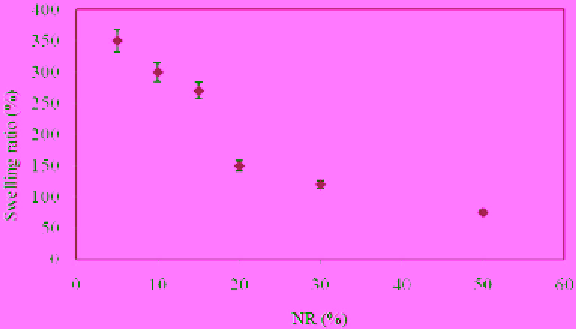Agriculture Reference
In-Depth Information
to swell in water, thus the diffusion through this coating is the rate-limiting step for swelling
and urea release. These phenomena may perhaps be explained by the different swellabilities
of the NR/St blend matrices since St can easily swell with water. The urea in the swollen St
can diffuse rapidly and can be released quickly due to weak interactions between the urea and
the St membrane. The urea cumulatively released from the capsules coated with St was
almost complete within 6 h (Figure 30). After the NR was grafted with St, the urea released
from the beads dramatically decreased compared to the other samples as observed from the %
urea cumulative release. This is due to the graft copolymer between the NR and the St, which
has a very strong water barrier. When the NR/St blend and NR-g-St was coated onto the
capsule, the cumulative urea released from the capsule stored under the same conditions for
48 h was 85 and 60%, respectively. In conclusion, it should be noted that with the NR-g-St
coating, the capsule matrix becomes denser and resulted in a decrease in the rate of diffusion
of urea through the swollen beads due to the chemical interaction between the NR and the St
through the grafting interaction.
This result is supported by our previous work (see section
3.5).
Figure 26. Swelling ratio (%) of the 5:5 PVA/St blend with different NR contents in water.
Figure 27. Cumulative amounts of urea released (%) from the capsule with a modified PVA coating
layer.




Search WWH ::

Custom Search